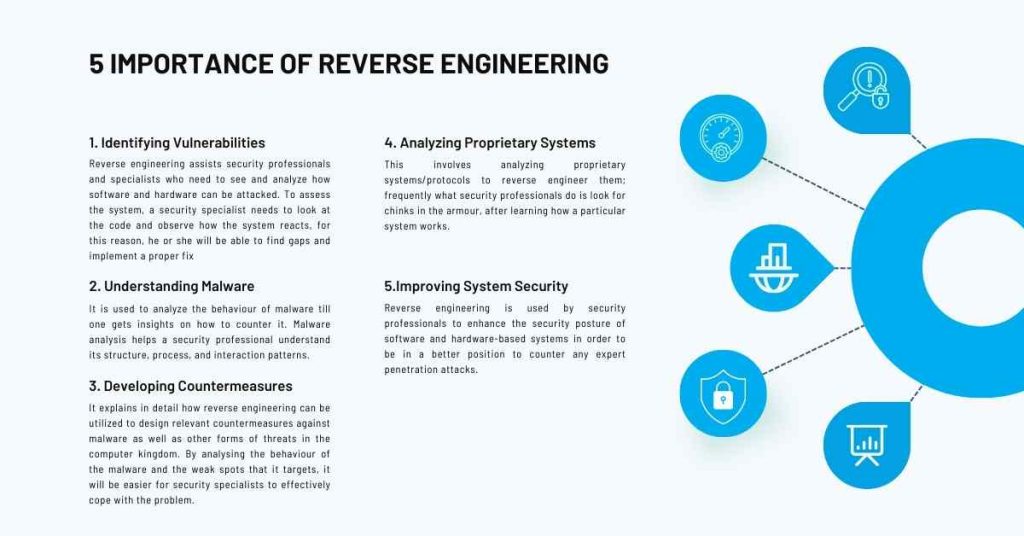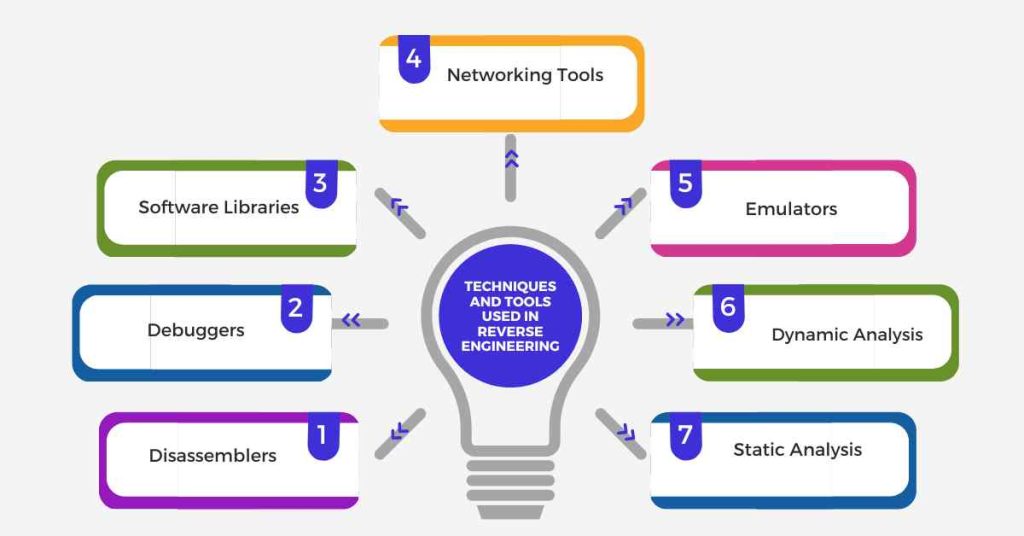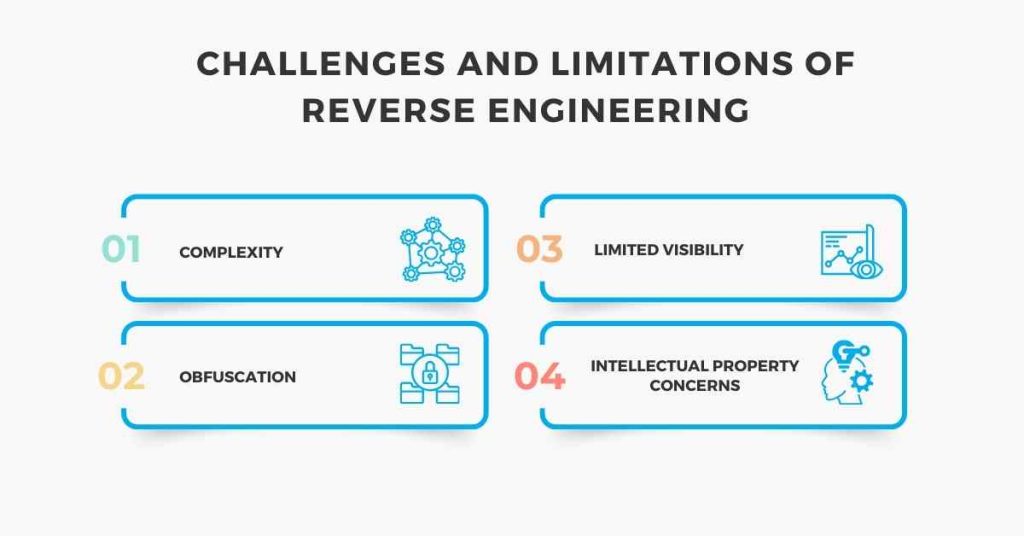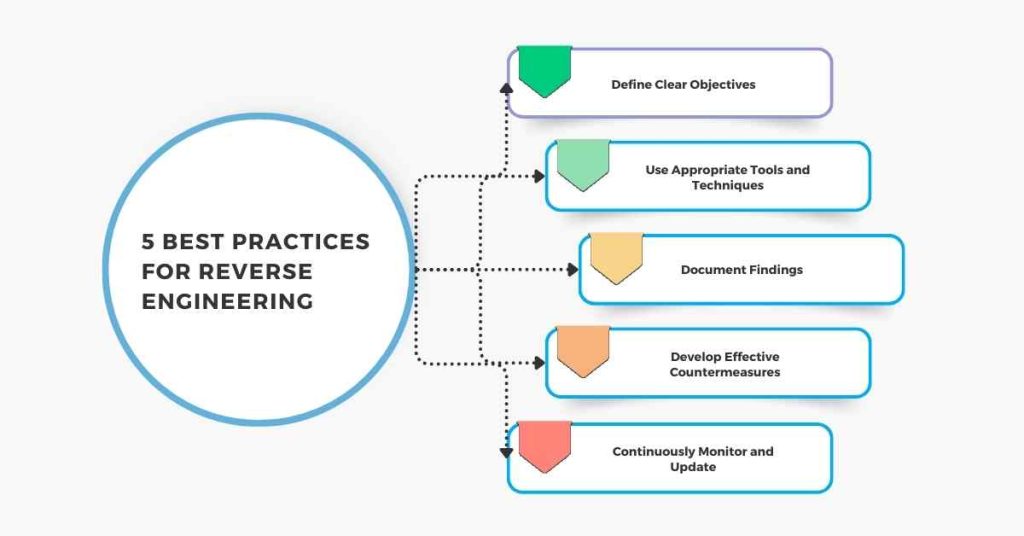In the realm of cyber security and ethical hacking, reverse engineering is an essential technique used to analyze and understand the inner workings of software, hardware, and other digital systems. It involves the process of dissecting and examining the components of a system or technology to comprehend its design, behaviour, and functionality.
In this article, we will delve into the concept of What Is Reverse Engineering In Ethical Hacking And Cyber Security, its importance in ethical hacking and cyber security, and the various techniques and tools used in the process.
What is Reverse Engineering?
Reverse engineering is a methodical approach to deconstructing a system or technology to understand its internal structure, behaviour, and vulnerabilities. It involves a range of activities, including disassembling, debugging, and analyzing the system’s code, data, and other components. Reverse engineering is used in various fields, including software development, hardware design, and cyber security.
In the context of cyber security, reverse engineering is used to identify vulnerabilities in software and hardware systems, understand the behaviour of malware, and develop effective countermeasures. It is also used to analyze proprietary systems and protocols, which can help security professionals understand how these systems work and identify potential weaknesses.
Importance of Reverse Engineering in Ethical Hacking and Cyber Security

Reverse engineering plays a critical role in ethical hacking and cyber security. Here are some reasons why:
1. Identifying Vulnerabilities
Reverse engineering assists security professionals and specialists who need to see and analyze how software and hardware can be attacked.
To assess the system, a security specialist needs to look at the code and observe how the system reacts, for this reason, he or she will be able to find gaps and implement a proper fix.
2. Understanding Malware
It is used to analyze the behaviour of malware till one gets insights on how to counter it. Malware analysis helps a security professional understand its structure, process, and interaction patterns.
3. Developing Countermeasures
It explains in detail how reverse engineering can be utilized to design relevant countermeasures against malware as well as other forms of threats in the computer kingdom. By analysing the behaviour of the malware and the weak spots that it targets, it will be easier for security specialists to effectively cope with the problem.
4. Analyzing Proprietary Systems
This involves analyzing proprietary systems/protocols to reverse engineer them; frequently what security professionals do is look for chinks in the armour, after learning how a particular system works.
5. Improving System Security
Reverse engineering is used by security professionals to enhance the security posture of software and hardware-based systems in order to be in a better position to counter any expert penetration attacks.
Techniques and Tools Used in Reverse Engineering

Reverse engineering involves a range of techniques and tools, including:
1. Disassemblers
Disassemblers are binary code translation tools that convert binary code into assembly code that security professionals can comprehend.
2. Debuggers
A debugger is a utilisation in security that enables an analyst to examine the system and the flow of the code line by line to expose areas of weakness.
3. Software Libraries
Software libraries refer to a compilation of problem solutions written in programming languages that apply to the analysis and reverse engineering of software systems.
4. Networking Tools
Packet sniffers and network protocol analyzers are used to analyze packets on networks to find weaknesses.
5. Emulators
An emulator is a software or device that imitates another system or technology with the aim of the latter being analyzed and even reverse-engineered.
6. Dynamic Analysis
Dynamic analysis, in turn, concerns checking a system’s behaviour during its operation, which might also help identify critical flaws.
7. Static Analysis
Static analysis is all about reviewing a system and its code without actually running the system; analytical security professionals can benefit from it.
Challenges and Limitations of Reverse Engineering

Reverse engineering is a complex and challenging process, and there are several limitations to consider:
1. Complexity
Reverse engineering can be a time-consuming and complex process, requiring significant expertise and resources.
2. Obfuscation
Some systems and technologies are designed to prevent reverse engineering, using techniques such as code obfuscation and encryption.
3. Limited Visibility
Reverse engineering can provide limited visibility into a system’s behaviour, making it difficult to identify all potential vulnerabilities.
4. Intellectual Property Concerns
Reverse engineering can raise intellectual property concerns, particularly when analyzing proprietary systems and technologies.
Best Practices for Reverse Engineering

Here are some best practices for reverse engineering in cyber security and ethical hacking:
1. Define Clear Objectives
It’s important to identify the goals of reverse engineering whether they are the discovery of specific vulnerabilities or an understanding of malware.
2. Use Appropriate Tools and Techniques
It is essential to employ related tools and methods to perform reverse engineering.
3. Document Findings
Record all and everything, including the discovering vulnerabilities, as well as, countermeasures that are possible to take.
4. Develop Effective Countermeasures
Design workable mitigation strategies that may be implemented in cases of certain vulnerabilities that are likely to pose great threats.
5. Continuously Monitor and Update
Try to provide feedback for the reverse engineering process that will enhance the efficiencies of the exercise.
Conclusion
Reverse engineering is a critical technique in cyber security and ethical hacking, allowing security professionals to analyze and understand the inner workings of software, hardware, and other digital systems.
By using reverse engineering techniques and tools, security professionals can identify vulnerabilities, understand malware behaviour, and develop effective countermeasures to mitigate potential threats. While there are challenges and limitations to consider, reverse engineering is an essential process in the fight against cyber threats.
FAQs: What Is Reverse Engineering In Ethical Hacking And Cyber Security?
1. What is Reverse Engineering in the context of Ethical Hacking and Cyber Security?
Ans: Reverse engineering is a methodical approach to deconstructing a system or technology to understand its internal structure, behaviour, and vulnerabilities. It involves analyzing the system’s code, data, and other components to identify potential weaknesses and develop effective countermeasures.
2. Why is Reverse Engineering important in Ethical Hacking and Cyber Security?
Ans: Reverse engineering is important in ethical hacking and cyber security because it helps security professionals identify vulnerabilities in software and hardware systems, understand malware behaviour, and develop effective countermeasures to mitigate potential threats.
3. What are some common techniques used in Reverse Engineering?
Ans: Some common techniques used in reverse engineering include disassembling, debugging, dynamic analysis, static analysis, and using software libraries and networking tools.
4. What are some common tools used in Reverse Engineering?
Ans: Some common tools used in reverse engineering include disassemblers, debuggers, packet sniffers, network protocol analyzers, and software libraries.
5. Can Reverse Engineering be used to analyze Malware?
Ans: Yes, reverse engineering can be used to analyze malware and understand its behaviour. By dissecting malware, security professionals can identify its components, behaviour, and communication protocols.
6. Is Reverse Engineering Legal?
Ans: Reverse engineering is generally considered legal, but it depends on the context and purpose. Reverse engineering proprietary systems or technologies without permission can be considered copyright infringement.
7. What are some challenges associated with Reverse Engineering?
Ans: Some challenges associated with reverse engineering include complexity, obfuscation, limited visibility, and intellectual property concerns.
8. How long does it take to become proficient in Reverse Engineering?
Ans: The time it takes to become proficient in reverse engineering depends on individual factors, including prior experience, training, and dedication. It can take several months to several years to become proficient in reverse engineering.
9. What are some best practices for Reverse Engineering?
Ans: Some best practices for reverse engineering include defining clear objectives, using appropriate tools and techniques, documenting findings, developing effective countermeasures, and continuously monitoring and updating the process.
10. Can Reverse Engineering be used to improve System Security?
Ans: Yes, reverse engineering can be used to improve system security by identifying vulnerabilities and developing effective countermeasures to mitigate potential threats. By analyzing a system’s code and behavior, security professionals can identify weaknesses and develop patches or fixes to address them.












